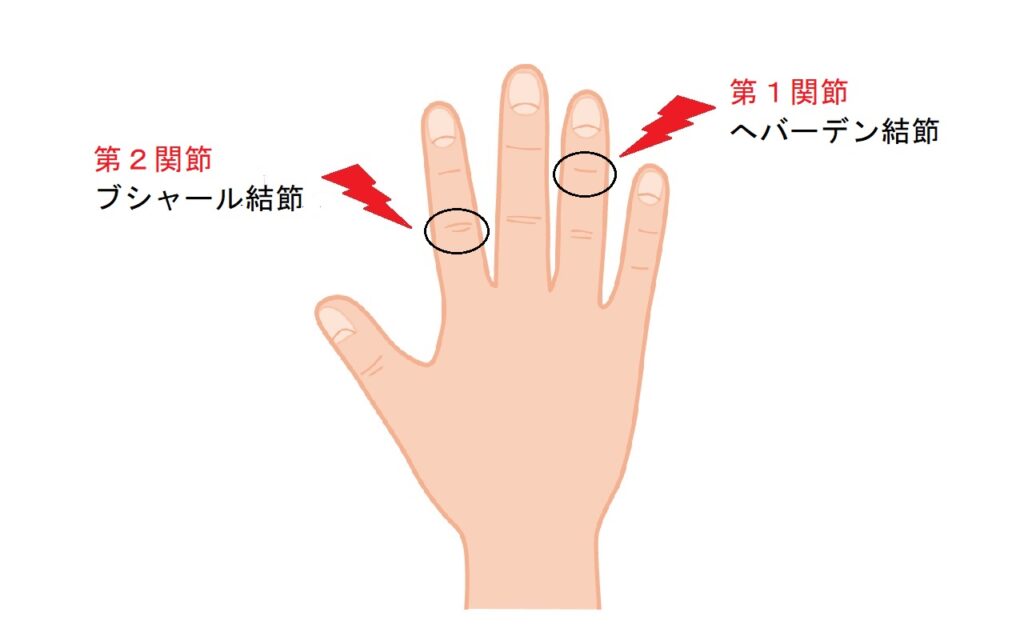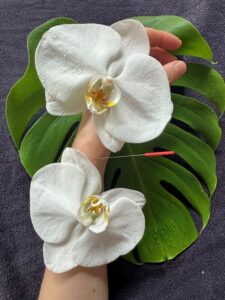ヘパーデン結節
Heberden's nodes and Bouchard's nodes

#heberden's nodes #Bouchard's nodes

患者は税理士の先生。施術後の一発目の言葉は、「痛みが抜けた、指も何年かぶりにキレイで本当に嬉しいでした」でした。患者様の嬉しいという言葉を聞けて、こちらまで嬉しくなりました。
朝起きたとき、手がこわばって握れない、指が腫れて痛み、ぞうきんが絞れない、ビンのふたが開けられない関節が太くなり、変形してしまったなど、ヘバーデン結節やブシャール結節は中年女性に多く見られます。年のせいだから仕方ないと、治療しないで放置して我慢している方も多くいらっしゃいます。ヘパーデン結節には女性ホルモンが関与しています。女性ホルモンには大きく分けて2種類あり、エストロゲン(卵胞ホルモン)とプロゲステロン(黄体ホルモン)があります。このうちエストロゲンは、女性の更年期障害に関係します。エストロゲンの量が減ることで、更年期障害の代表であるホットフラッシュなどの症状が起きます。また、手指の関節も、エストロゲンが低下することで、関節や腱の周りにある滑膜という組織が腫れます。関節の滑膜が腫れれば、関節炎が起こりやすく、腱の周りの滑膜が腫れれば、神経を圧迫してしびれが起こりやすくなります。
エストロゲンは手指の血管を拡張して血流をよくし、関節の「滑膜」を柔軟に保って腱や腱鞘を保護しています。そこで、エストロゲンが急激に減少すると、腱や関節が腫れて痛み、動かしにくくなり、こわばってしまいます。エストロゲンの急激な減少は、更年期だけではなく、産後の授乳期には、妊娠中に高かったエストロゲン値が急激に元に戻ります。このため、手指の痛みやこわばりは、更年期だけでなく、産後の授乳期などにも起こります。産後のエストロゲン減少はやがて落ち着きますが、更年期ではエストロゲンのない状態が永遠と続きます。このため、加齢とともにしだいに滑膜の炎症がひどくなり、やがて変形を引き起こします。更年期の手指の痛みは、放っておくと7~10年で指の変形に進行する可能性があります。
今回は女性ホルモンを促進するローズのアロママッサージを、隔週で3回、続けておこないました。患者さまからは、手が軽くなり、痛みも減少して、変形も改善したと喜んで頂けました
The patient is a tax accountant. His first words after the treatment were ‘I was really happy, the pain is gone and my fingers are beautiful for the first time in years’. Hearing the patient say she was happy made us happy too.
The symptoms include: "When I wake up in the morning, my hands are stiff and I cannot grip them," "My fingers are swollen and painful, and I cannot squeeze a rag," "I cannot open a bottle lid," and "My joints have become thickened and deformed."
Heberden's nodes and Bouchard's nodes are more common in middle-aged women. Many of them are left untreated and put up with it because of their age. Female hormones are involved in Heberden's nodules. There are two main types of female hormones: estrogen (follicle hormone) and progesterone (progestin). Of these, estrogen is associated with female menopause. Decreased levels of estrogen cause symptoms such as hot flashes, which are typical of menopause. The joints of the hands and fingers also swell as estrogen decreases, as does the synovial membrane, a tissue around joints and tendons. Swollen synovium in joints can lead to arthritis, and swollen synovium around tendons can cause pressure on nerves, leading to numbness.
Estrogen dilates blood vessels in the fingers to improve blood flow and keeps the "synovium" of the joints flexible to protect the tendons and sheaths. Therefore, when estrogen decreases rapidly, tendons and joints become swollen, painful, difficult to move, and stiff. The rapid decrease in estrogen is not limited to menopause; during the postpartum lactation period, estrogen levels that were high during pregnancy rapidly return to normal. Therefore, pain and stiffness in the fingers occur not only during menopause, but also during the postpartum lactation period. The postpartum estrogen decrease eventually subsides, but the absence of estrogen lasts forever during menopause. As a result, the synovial membrane becomes increasingly inflamed with age, eventually leading to deformity. Menopausal hand pain, if left untreated, can progress to finger deformity in 7 to 10 years.
In this case, we continued the rose aroma massage, which promotes female hormones, three times every other week. The patient was pleased to report that her hand felt lighter, the pain decreased, and the deformity improved!


